[av_section min_height=’50’ min_height_pc=’25’ min_height_px=’500px’ padding=’huge’ shadow=’no-border-styling’ bottom_border=’no-border-styling’ bottom_border_diagonal_color=’#333333′ bottom_border_diagonal_direction=” bottom_border_style=” custom_margin=’0px’ custom_margin_sync=’true’ custom_arrow_bg=” id=” color=’main_color’ background=’bg_color’ custom_bg=’#348889′ background_gradient_color1=” background_gradient_color2=” background_gradient_direction=’vertical’ src=’https://wastewater.sustainabilityconsortium.org/wp-content/uploads/2019/09/waste-water-toolkit-learn.jpg’ attachment=’1358′ attachment_size=’full’ attach=’fixed’ position=’center center’ repeat=’stretch’ video=” video_ratio=’16:9′ overlay_enable=’aviaTBoverlay_enable’ overlay_opacity=’0.5′ overlay_color=’#0c426a’ overlay_pattern=” overlay_custom_pattern=” av_element_hidden_in_editor=’0′ av_uid=’av-jzodj44s’ custom_class=”]
[av_textblock size=’30’ font_color=’custom’ color=’#ffffff’ av-medium-font-size=” av-small-font-size=” av-mini-font-size=” av_uid=’av-jzodwwkl’ custom_class=” admin_preview_bg=”]
LEARN
Understanding the problem is the first step towards a solution! Keep scrolling to educate yourself about the wastewater produced by the consumer goods industry and how it affects us all.
[/av_textblock]
[/av_section]
[av_section min_height=’25’ min_height_pc=’25’ min_height_px=’500px’ padding=’default’ shadow=’no-border-styling’ bottom_border=’no-border-styling’ bottom_border_diagonal_color=’#333333′ bottom_border_diagonal_direction=” bottom_border_style=” custom_margin=’0px’ custom_margin_sync=’true’ custom_arrow_bg=” id=’sf-query-panel’ color=’main_color’ background=’bg_color’ custom_bg=’#0c4057′ background_gradient_color1=” background_gradient_color2=” background_gradient_direction=’vertical’ src=” attachment=” attachment_size=” attach=’scroll’ position=’top left’ repeat=’no-repeat’ video=” video_ratio=’16:9′ overlay_opacity=’0.5′ overlay_color=” overlay_pattern=” overlay_custom_pattern=” av_element_hidden_in_editor=’0′ av_uid=’av-k1a1ff9v’ custom_class=”]
[av_textblock size=” font_color=’custom’ color=’#ffffff’ av-medium-font-size=” av-small-font-size=” av-mini-font-size=” av_uid=’av-k2awjcz8′ custom_class=” admin_preview_bg=”]
The database below will show you options for how to take action on wastewater treatment.
CLICK HERE to learn how to use the toolbox
[/av_textblock]
[av_textblock size=” font_color=” color=” av-medium-font-size=” av-small-font-size=” av-mini-font-size=” av_uid=’av-k12o1woz’ custom_class=” admin_preview_bg=”]
[/av_textblock]
[/av_section]
[av_section min_height=” min_height_pc=’25’ min_height_px=’500px’ padding=’default’ shadow=’no-border-styling’ bottom_border=’no-border-styling’ bottom_border_diagonal_color=’#333333′ bottom_border_diagonal_direction=” bottom_border_style=” custom_margin=’0px’ custom_margin_sync=’true’ custom_arrow_bg=” id=’act-search-bar’ color=’main_color’ background=’bg_color’ custom_bg=” background_gradient_color1=” background_gradient_color2=” background_gradient_direction=’vertical’ src=” attachment=” attachment_size=” attach=’scroll’ position=’top left’ repeat=’no-repeat’ video=” video_ratio=’16:9′ overlay_opacity=’0.5′ overlay_color=” overlay_pattern=” overlay_custom_pattern=” av_element_hidden_in_editor=’0′ av_uid=’av-k12o0eq8′ custom_class=”]
[av_textblock size=” font_color=” color=” av-medium-font-size=” av-small-font-size=” av-mini-font-size=” av_uid=’av-k12o1woz’ custom_class=” admin_preview_bg=”]
Page 8 of 16
The Present State of Water Environment in Vietnam
This is a PowerPoint that contains surface and groundwater quality and recent activities of the Water Environmental Protection in Institute of Environmental Technology as of 2007. SOURCE: Water Environment Partnership in Asia (WEPA)
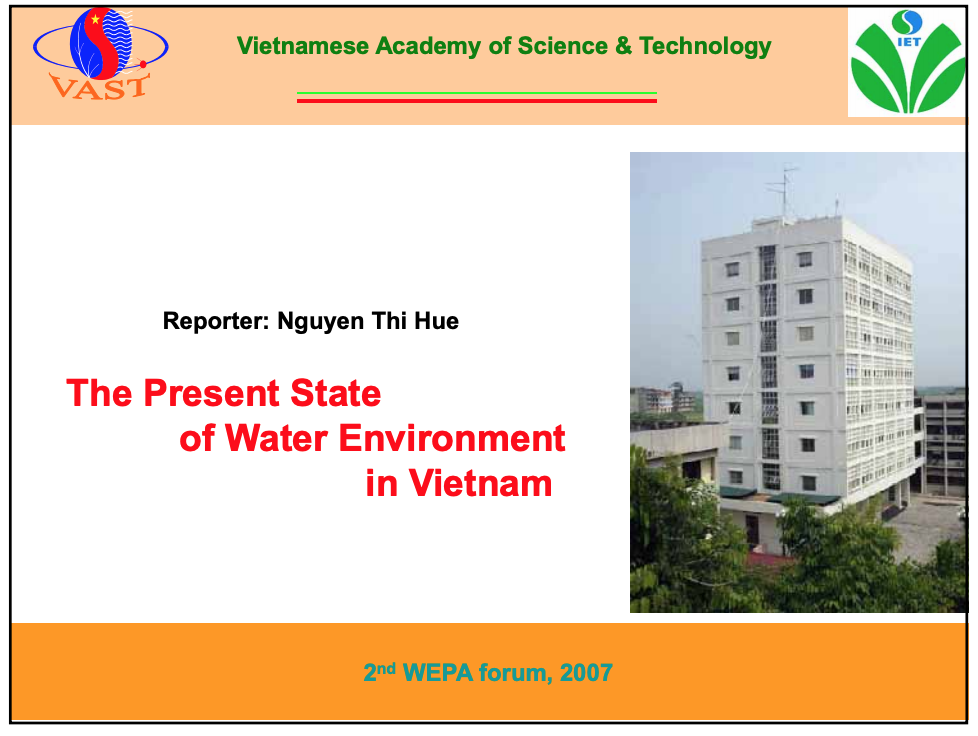
May 11, 2021
Sustainable Textile Solutions
This is a website for Sustainable Textile Solutions (STS). The STS programs comprise three main components: consultancy, auditing, and capacity building. These are designed as bespoke programs to meet the individual requirements of each client. SOURCE: Sustainable Textile Solutions, a Member of BluWin Ltd.

September 17, 2020
Alliance for Water Stewardship
This is a website for the Alliance for Water Stewardship, a global membership collaboration comprising businesses, NGOs, and the public sector. Their members contribute to the sustainability of local water resources through their adoption and promotion of a universal framework for the sustainable use of water – the International Water Stewardship Standard, or AWS Standard […]
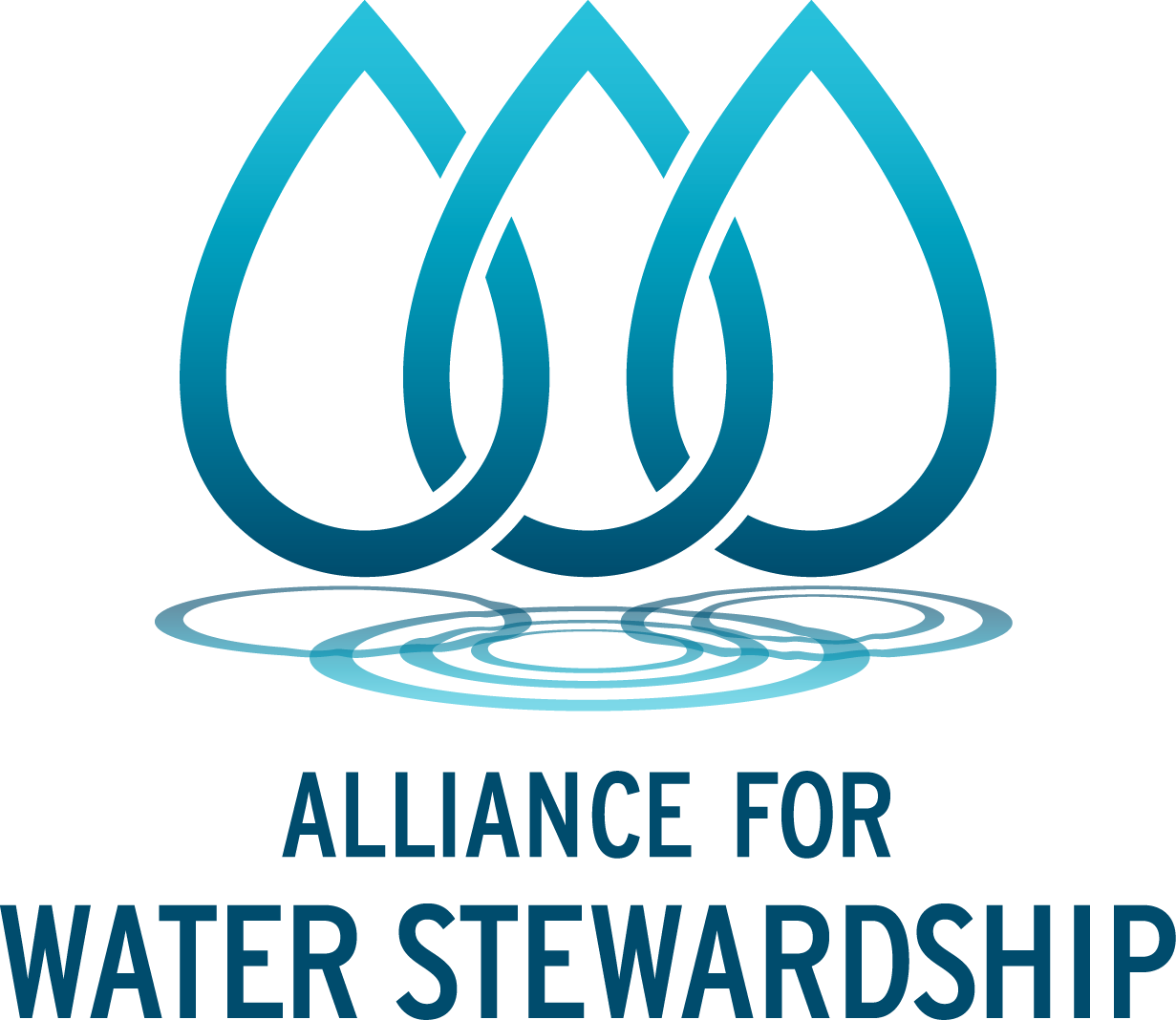
September 16, 2020
Roadmap to Zero by ZDHC
This is a website for the Roadmap to Zero Programme, which is a global multi-stakeholder initiative of more than 160 contributors within the fashion and footwear industry. Its goal is to protect the planet by reducing the industry’s chemical footprint. Their solutions and guidelines transform how chemicals are used. Their community spreads knowledge and ideas […]

DETOX TO ZERO by OEKO-TEX
This is a website page explaining DETOX TO ZERO by OEKO-TEX®. DETOX TO ZERO is an efficient verification system for the textile and leather industry which aims to implement the criteria of the Greenpeace DETOX Campaign within production facilities. In this case, instead of certification, there is an analysis tool for the optimization and monitoring […]

July 30, 2020
BHIVE
This is a website for the company Bhive, an application that helps factories make mindful decisions on chemical usage. How it works: scan and upload chemicals into smart inventory, view smart inventory, & phase out high-risk chemicals for a cleaner future. See the website for a demo.

Academy by ZDHC
This is a training platform for sustainable chemical management & ZDHC (Zero Discharge of Hazardous Chemicals) tools for the textile, apparel, footwear, leather industry. ZDHC is a group of apparel and footwear brands and retailers working together to lead the industry towards zero discharge of hazardous chemicals. SOURCE: ZDHC

A Review on Emerging contaminents in wastewaters and the environment
This is an academic journal article written in 2014 that “identifies understudied areas of emerging contaminant (EC) research in wastewaters and the environment, and recommends direction for future monitoring.” SOURCE: Science Direct
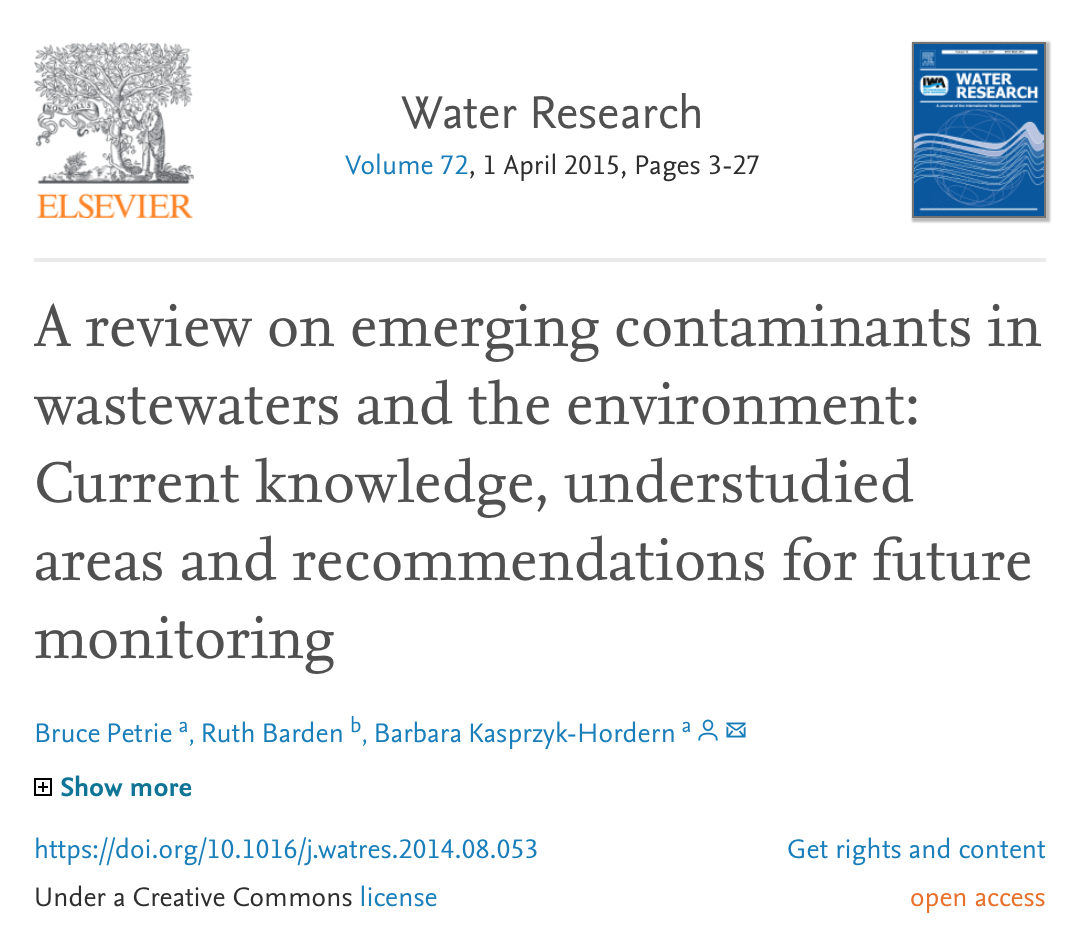
October 31, 2019
Microplastics in Wastewater Treatment Plants: Detection, Occurence, and Removal
This is an academic journal article written in 2018. It reviews the current “detection, occurrence and removal of microplastics in WWTPs. Specifically, the different techniques used for collecting microplastics from both wastewater and sewage sludge, and their pretreatment and characterization methods are reviewed and analyzed.” SOURCE: Elsevier
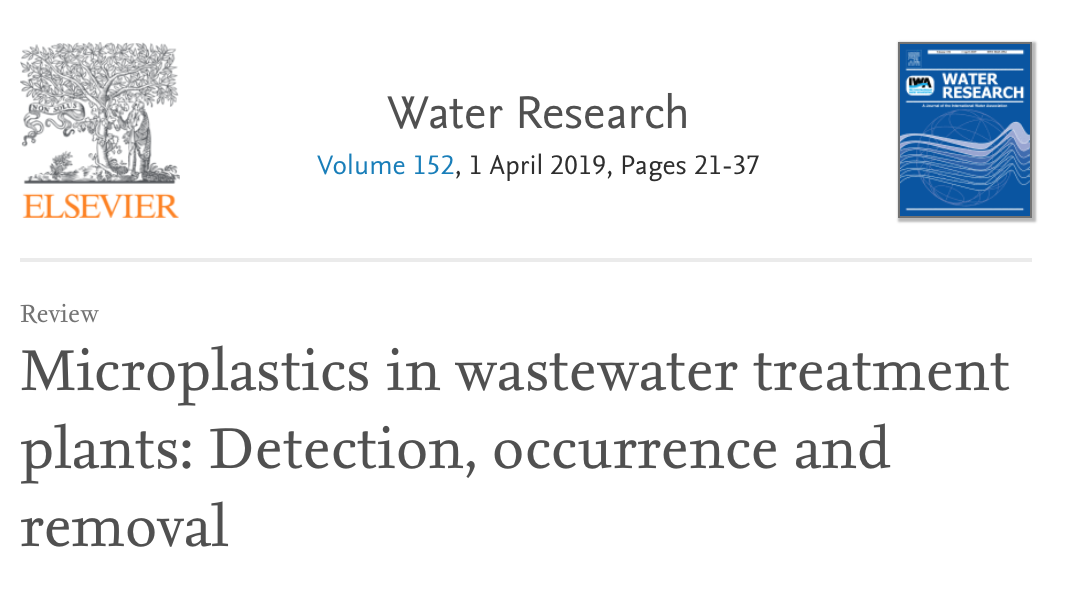
ZDHC Wastewater Guidelines Version 1.1
This is a document created by the ZDHC in 2019 that sets a single, unified expectation across the textile and footwear industries for wastewater discharge quality. It has identified four key areas and two cross-cutting areas which are critical towards eliminating hazardous chemicals from the global textile, leather, and footwear industries. The ZDHC (Zero Discharge […]
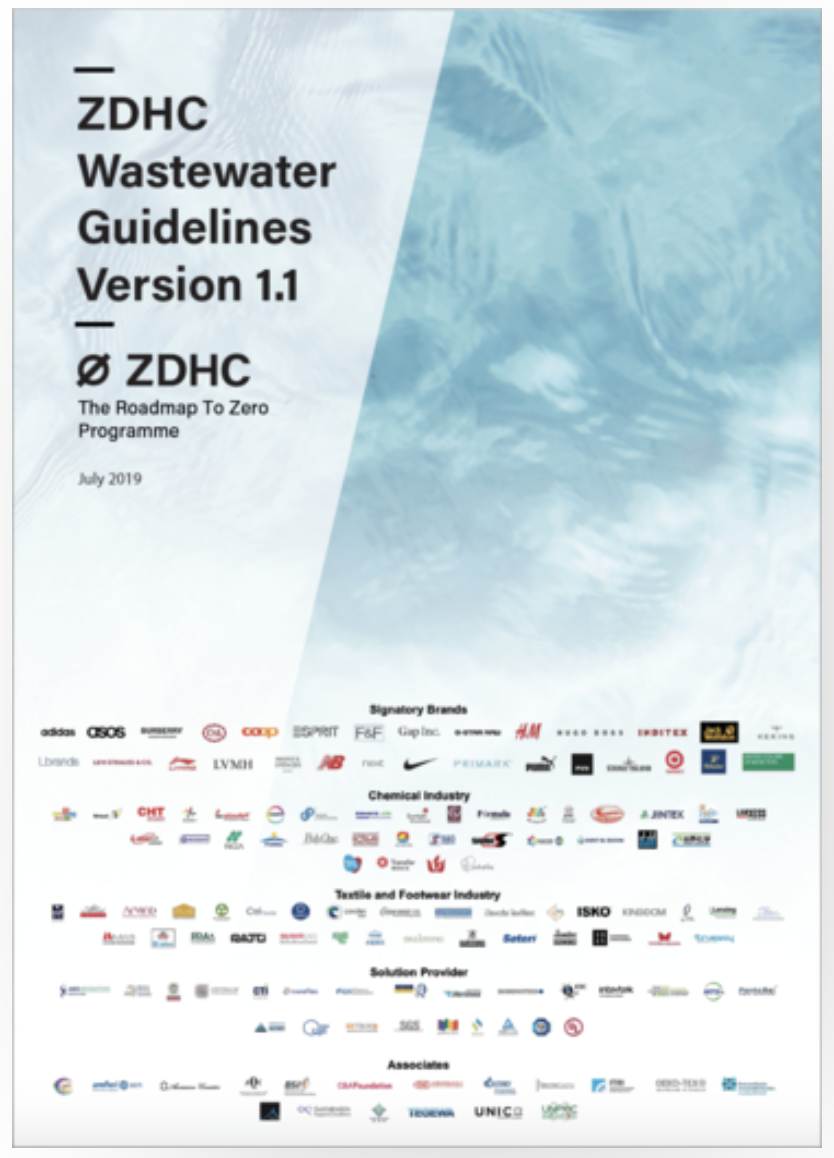
World Water Development Report 2017
This is a report by the United Nations that demonstrates how improved wastewater management generates social, environmental, and economic benefits essential for sustainable development and is essential to achieving the 2030 Agenda for Sustainable Development. It seeks to inform decision-makers, government, civil society, and private sector, about the importance of managing wastewater as an undervalued […]
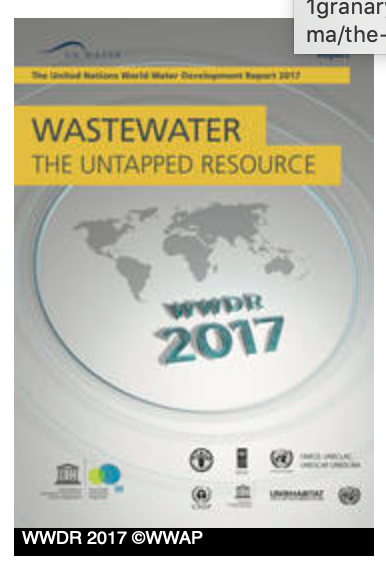
Water Risk Monetizer
This is a free tool created by Ecolab that provides actionable information to help businesses understand water-related risks and quantify risks in financial terms to inform responsible decisions that enable growth. SOURCE: ECOLAB
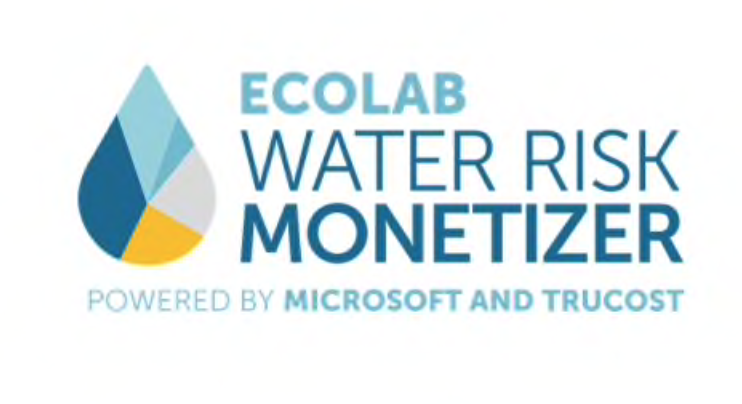
Page 8 of 16
[/av_textblock]
[/av_section]
[av_layout_row border=” min_height_percent=” min_height_pc=’25’ min_height=’0′ color=’main_color’ mobile=’av-flex-cells’ id=’learn-content’ av_element_hidden_in_editor=’0′ mobile_breaking=” av_uid=’av-k1jss7lz’ custom_class=”]
[av_cell_one_half av_uid=’av-2pfq9′]
[av_one_third first min_height=” vertical_alignment=” space=” custom_margin=” margin=’0px’ row_boxshadow=” row_boxshadow_color=” row_boxshadow_width=’10’ link=” linktarget=” link_hover=” title_attr=” alt_attr=” padding=’0px’ highlight=” highlight_size=” border=” border_color=” radius=’0px’ column_boxshadow=” column_boxshadow_color=” column_boxshadow_width=’10’ background=’bg_color’ background_color=” background_gradient_color1=” background_gradient_color2=” background_gradient_direction=’vertical’ src=” background_position=’top left’ background_repeat=’no-repeat’ animation=” mobile_breaking=” mobile_display=” av_uid=’av-5b871′]
[av_image src=’https://wastewater.sustainabilityconsortium.org/wp-content/uploads/2021/09/whatiswastewater.jpg’ attachment=’3424′ attachment_size=’full’ align=’left’ styling=” hover=” link=” target=” caption=” font_size=” appearance=” overlay_opacity=’0.4′ overlay_color=’#000000′ overlay_text_color=’#ffffff’ copyright=” animation=’no-animation’ av_uid=’av-k1bcsjkb’ custom_class=” admin_preview_bg=”][/av_image]
[/av_one_third][av_two_third min_height=” vertical_alignment=” space=” custom_margin=” margin=’0px’ row_boxshadow=” row_boxshadow_color=” row_boxshadow_width=’10’ link=” linktarget=” link_hover=” title_attr=” alt_attr=” padding=’0px’ highlight=” highlight_size=” border=” border_color=” radius=’0px’ column_boxshadow=” column_boxshadow_color=” column_boxshadow_width=’10’ background=’bg_color’ background_color=” background_gradient_color1=” background_gradient_color2=” background_gradient_direction=’vertical’ src=” background_position=’top left’ background_repeat=’no-repeat’ animation=” mobile_breaking=” mobile_display=” av_uid=’av-4b41h’]
[av_textblock size=” font_color=” color=” av-medium-font-size=” av-small-font-size=” av-mini-font-size=” av_uid=’av-k1bcrwfd’ custom_class=” admin_preview_bg=”]
What is wastewater?
Wastewater is any water that has been used by humans. In the consumer goods industry, it is the water used to produce products and often contains chemicals and dyes. This water should be treated before it returns to the watershed, but that is frequently not the case.
[/av_textblock]
[/av_two_third][/av_cell_one_half][av_cell_one_half av_uid=’av-1uirl’]
[av_one_third first min_height=” vertical_alignment=” space=” custom_margin=” margin=’0px’ row_boxshadow=” row_boxshadow_color=” row_boxshadow_width=’10’ link=” linktarget=” link_hover=” title_attr=” alt_attr=” padding=’0px’ highlight=” highlight_size=” border=” border_color=” radius=’0px’ column_boxshadow=” column_boxshadow_color=” column_boxshadow_width=’10’ background=’bg_color’ background_color=” background_gradient_color1=” background_gradient_color2=” background_gradient_direction=’vertical’ src=” background_position=’top left’ background_repeat=’no-repeat’ animation=” mobile_breaking=” mobile_display=” av_uid=’av-3usb5′]
[av_image src=’https://wastewater.sustainabilityconsortium.org/wp-content/uploads/2021/09/whatisthewastewatertoolbox.jpg’ attachment=’3427′ attachment_size=’full’ align=’left’ styling=” hover=” link=” target=” caption=” font_size=” appearance=” overlay_opacity=’0.4′ overlay_color=’#000000′ overlay_text_color=’#ffffff’ copyright=” animation=’no-animation’ av_uid=’av-k1bcsjkb’ custom_class=” admin_preview_bg=”][/av_image]
[/av_one_third][av_two_third min_height=” vertical_alignment=” space=” custom_margin=” margin=’0px’ row_boxshadow=” row_boxshadow_color=” row_boxshadow_width=’10’ link=” linktarget=” link_hover=” title_attr=” alt_attr=” padding=’0px’ highlight=” highlight_size=” border=” border_color=” radius=’0px’ column_boxshadow=” column_boxshadow_color=” column_boxshadow_width=’10’ background=’bg_color’ background_color=” background_gradient_color1=” background_gradient_color2=” background_gradient_direction=’vertical’ src=” background_position=’top left’ background_repeat=’no-repeat’ animation=” mobile_breaking=” mobile_display=” av_uid=’av-4b41h’]
[av_textblock size=” font_color=” color=” av-medium-font-size=” av-small-font-size=” av-mini-font-size=” av_uid=’av-k1bcrwfd’ custom_class=” admin_preview_bg=”]
What is the Wastewater 101 Toolbox?
The Wastewater 101 Toolbox is where brands, retailers, manufacturers, designers, and even the public-at-large can access education, training, and resources related to facilitating and incentivizing the proper treatment of wastewater in the consumer goods industry.
[/av_textblock]
[/av_two_third][/av_cell_one_half]
[/av_layout_row]
[av_layout_row border=” min_height_percent=” min_height_pc=’25’ min_height=’0′ color=’main_color’ mobile=’av-flex-cells’ id=’learn-content’ av_element_hidden_in_editor=’0′ mobile_breaking=” av_uid=’av-k1jss7lz’ custom_class=”]
[av_cell_one_half av_uid=’av-1ccah’]
[av_one_third first min_height=” vertical_alignment=” space=” custom_margin=” margin=’0px’ row_boxshadow=” row_boxshadow_color=” row_boxshadow_width=’10’ link=” linktarget=” link_hover=” title_attr=” alt_attr=” padding=’0px’ highlight=” highlight_size=” border=” border_color=” radius=’0px’ column_boxshadow=” column_boxshadow_color=” column_boxshadow_width=’10’ background=’bg_color’ background_color=” background_gradient_color1=” background_gradient_color2=” background_gradient_direction=’vertical’ src=” background_position=’top left’ background_repeat=’no-repeat’ animation=” mobile_breaking=” mobile_display=” av_uid=’av-2ui4x’]
[av_image src=’https://wastewater.sustainabilityconsortium.org/wp-content/uploads/2021/09/whyisntwastewatertreated.jpg’ attachment=’3425′ attachment_size=’full’ align=’left’ styling=” hover=” link=” target=” caption=” font_size=” appearance=” overlay_opacity=’0.4′ overlay_color=’#000000′ overlay_text_color=’#ffffff’ copyright=” animation=’no-animation’ av_uid=’av-k1bcsjkb’ custom_class=” admin_preview_bg=”][/av_image]
[/av_one_third][av_two_third min_height=” vertical_alignment=” space=” custom_margin=” margin=’0px’ row_boxshadow=” row_boxshadow_color=” row_boxshadow_width=’10’ link=” linktarget=” link_hover=” title_attr=” alt_attr=” padding=’0px’ highlight=” highlight_size=” border=” border_color=” radius=’0px’ column_boxshadow=” column_boxshadow_color=” column_boxshadow_width=’10’ background=’bg_color’ background_color=” background_gradient_color1=” background_gradient_color2=” background_gradient_direction=’vertical’ src=” background_position=’top left’ background_repeat=’no-repeat’ animation=” mobile_breaking=” mobile_display=” av_uid=’av-2d0nt’]
[av_textblock size=” font_color=” color=” av-medium-font-size=” av-small-font-size=” av-mini-font-size=” av_uid=’av-k1bcsuib’ custom_class=” admin_preview_bg=”]
Why isn’t wastewater treated?
There are many reasons wastewater may not be treated. One is that people simply don’t understand the problem. Another is that once they do understand, they do not have the knowledge and tools to address the problem. One big reason wastewater goes untreated is that manufacturers lack the support needed to do so. Treating wastewater is expensive, and with increasing pressure to lower costs, manufacturers must make tough decisions.
[/av_textblock]
[/av_two_third][/av_cell_one_half][av_cell_one_half av_uid=’av-14sgd’]
[av_one_third first min_height=” vertical_alignment=” space=” custom_margin=” margin=’0px’ row_boxshadow=” row_boxshadow_color=” row_boxshadow_width=’10’ link=” linktarget=” link_hover=” title_attr=” alt_attr=” padding=’0px’ highlight=” highlight_size=” border=” border_color=” radius=’0px’ column_boxshadow=” column_boxshadow_color=” column_boxshadow_width=’10’ background=’bg_color’ background_color=” background_gradient_color1=” background_gradient_color2=” background_gradient_direction=’vertical’ src=” background_position=’top left’ background_repeat=’no-repeat’ animation=” mobile_breaking=” mobile_display=” av_uid=’av-1r88x’]
[av_image src=’https://wastewater.sustainabilityconsortium.org/wp-content/uploads/2019/10/TSC2014_lg.jpg’ attachment=’2316′ attachment_size=’full’ align=’left’ styling=” hover=” link=” target=” caption=” font_size=” appearance=” overlay_opacity=’0.4′ overlay_color=’#000000′ overlay_text_color=’#ffffff’ copyright=” animation=’no-animation’ av_uid=’av-k1bcrc03′ custom_class=” admin_preview_bg=”][/av_image]
[/av_one_third][av_two_third min_height=” vertical_alignment=” space=” custom_margin=” margin=’0px’ row_boxshadow=” row_boxshadow_color=” row_boxshadow_width=’10’ link=” linktarget=” link_hover=” title_attr=” alt_attr=” padding=’0px’ highlight=” highlight_size=” border=” border_color=” radius=’0px’ column_boxshadow=” column_boxshadow_color=” column_boxshadow_width=’10’ background=’bg_color’ background_color=” background_gradient_color1=” background_gradient_color2=” background_gradient_direction=’vertical’ src=” background_position=’top left’ background_repeat=’no-repeat’ animation=” mobile_breaking=” mobile_display=” av_uid=’av-x1o9′]
[av_textblock size=” font_color=” color=” av-medium-font-size=” av-small-font-size=” av-mini-font-size=” av_uid=’av-k1bcsuib’ custom_class=” admin_preview_bg=”]
Who is The Sustainability Consortium?
The Sustainability Consortium (TSC) is a global non-profit organization working to transform the consumer goods industry by partnering with leading companies to define, develop, and deliver more sustainable products.
Visit our website
[/av_textblock]
[/av_two_third][/av_cell_one_half]
[/av_layout_row]
[av_video src=’https://www.youtube.com/watch?v=l9KmgQuVYXA&feature=youtu.be’ mobile_image=” attachment=” attachment_size=” format=’16-9′ width=’2′ height=’4′ conditional_play=” av_uid=’av-k222fxih’ custom_class=”]
[av_layout_row border=” min_height_percent=” min_height_pc=’25’ min_height=’150px’ color=’main_color’ mobile=’av-flex-cells’ id=’learn-percent’ av_element_hidden_in_editor=’0′ mobile_breaking=” av_uid=’av-k1jrpkq5′ custom_class=”]
[av_cell_one_half vertical_align=’top’ padding=’30px’ padding_sync=’true’ background=’bg_color’ background_color=’#0a4057′ background_gradient_color1=” background_gradient_color2=” background_gradient_direction=’vertical’ src=” attachment=” attachment_size=” background_attachment=’scroll’ background_position=’top left’ background_repeat=’no-repeat’ link=” linktarget=” link_hover=” mobile_display=” av_uid=’av-k1jrnhmx’ custom_class=”]
[av_animated_numbers number=’80%’ number_format=” timer=” icon_select=’no’ icon=’ue800′ font=’entypo-fontello’ link=” linktarget=’no’ font_size=’64’ font_size_description=” circle=” circle_custom=” circle_border_color=” circle_bg_color=” circle_border_width=” circle_size=” color=’font-custom’ custom_color=’#ffffff’ av_uid=’av-k05t1yrm’ custom_class=” admin_preview_bg=”]
of freshwater withdrawal can be linked back to consumer goods.
[/av_animated_numbers]
[/av_cell_one_half][av_cell_one_half vertical_align=’top’ padding=’30px’ padding_sync=’true’ background=’bg_color’ background_color=’#0685a3′ background_gradient_color1=” background_gradient_color2=” background_gradient_direction=’vertical’ src=” attachment=” attachment_size=” background_attachment=’scroll’ background_position=’top left’ background_repeat=’no-repeat’ link=” linktarget=” link_hover=” mobile_display=” av_uid=’av-k1jrnv2f’ custom_class=”]
[av_animated_numbers number=’40%’ number_format=” timer=” icon_select=’no’ icon=’ue800′ font=’entypo-fontello’ link=” linktarget=’no’ font_size=’64’ font_size_description=” circle=” circle_custom=” circle_border_color=” circle_bg_color=” circle_border_width=” circle_size=” color=’font-custom’ custom_color=’#ffffff’ av_uid=’av-k05t1yrm’ custom_class=” admin_preview_bg=”]
of water use and discharge could be reduced through changes such as recycling process water and reusing cooling water.
[/av_animated_numbers]
[/av_cell_one_half]
[/av_layout_row]
[av_layout_row border=” min_height_percent=” min_height_pc=’25’ min_height=’350px’ color=’main_color’ mobile=’av-flex-cells’ id=” av_element_hidden_in_editor=’0′ mobile_breaking=” av_uid=’av-k1jrr7j2′ custom_class=”]
[av_cell_one_half vertical_align=’top’ padding=’30px’ padding_sync=’true’ background=’bg_color’ background_color=’#a0cbcd’ background_gradient_color1=” background_gradient_color2=” background_gradient_direction=’vertical’ src=” attachment=” attachment_size=” background_attachment=’scroll’ background_position=’top left’ background_repeat=’no-repeat’ link=” linktarget=” link_hover=” mobile_display=” av_uid=’av-k1jrnhmx’ custom_class=”]
[av_textblock size=” font_color=’custom’ color=’#ffffff’ av-medium-font-size=” av-small-font-size=” av-mini-font-size=” av_uid=’av-k1jrt9qg’ custom_class=” admin_preview_bg=”]
While technological solutions exist, they are often not being used and wastewater is directly discharged to receiving waters, untreated. Sometimes even when the water treatment technology is purchased and used, it is not run continuously in order to save money. Untreated wastewater can exacerbate local water scarcity issues, pollute entire watersheds, and harm other local industries that rely on the watershed such as agriculture and fishing. The aim of this toolbox is to help both manufacturers and brands improve their wastewater footprint, and have a positive, value adding message to bring to their consumers.
[/av_textblock]
[/av_cell_one_half][av_cell_one_half vertical_align=’top’ padding=’30px’ padding_sync=’true’ background=’bg_color’ background_color=” background_gradient_color1=” background_gradient_color2=” background_gradient_direction=’vertical’ src=’https://wastewater.sustainabilityconsortium.org/wp-content/uploads/2021/09/wastewater101toolboxdischarge.jpg’ attachment=’3416′ attachment_size=’full’ background_attachment=’scroll’ background_position=’bottom center’ background_repeat=’stretch’ link=” linktarget=” link_hover=” mobile_display=” av_uid=’av-k1jrnv2f’ custom_class=”]
[/av_cell_one_half]
[/av_layout_row]
[av_section min_height=” min_height_pc=’25’ min_height_px=’500px’ padding=’small’ shadow=’no-border-styling’ bottom_border=’no-border-styling’ bottom_border_diagonal_color=’#333333′ bottom_border_diagonal_direction=” bottom_border_style=” custom_margin=’0px’ custom_margin_sync=’true’ custom_arrow_bg=” id=’donate-newsletter’ color=’main_color’ background=’bg_color’ custom_bg=” background_gradient_color1=” background_gradient_color2=” background_gradient_direction=’vertical’ src=’https://wastewater.sustainabilityconsortium.org/wp-content/uploads/2019/10/footer-socket-bg.png’ attachment=’2295′ attachment_size=’full’ attach=’scroll’ position=’top left’ repeat=’repeat’ video=” video_ratio=’16:9′ overlay_enable=’aviaTBoverlay_enable’ overlay_opacity=’0.2′ overlay_color=’#ffffff’ overlay_pattern=” overlay_custom_pattern=” av_element_hidden_in_editor=’0′ av_uid=’av-29xxa’ custom_class=”]
[av_one_third first min_height=” vertical_alignment=’av-align-top’ space=” custom_margin=’aviaTBcustom_margin’ margin=’10px’ margin_sync=’true’ row_boxshadow_color=” row_boxshadow_width=’10’ link=” linktarget=” link_hover=” title_attr=” alt_attr=” padding=’0′ padding_sync=’true’ highlight_size=’1.1′ border=” border_color=” radius=’0px’ radius_sync=’true’ column_boxshadow_color=” column_boxshadow_width=’10’ background=’bg_color’ background_color=” background_gradient_color1=” background_gradient_color2=” background_gradient_direction=’vertical’ src=” attachment=” attachment_size=” background_position=’top left’ background_repeat=’no-repeat’ animation=” mobile_breaking=” mobile_display=” av_uid=’av-h6xpq’ custom_class=”]
[av_textblock size=” font_color=” color=” av-medium-font-size=” av-small-font-size=” av-mini-font-size=” av_uid=’av-jgds8wgh’ custom_class=” admin_preview_bg=’rgb(255, 255, 255)’]
SUPPORT OUR WORK
Give to TSC and support our work to eliminate sustainability issues caused by the products we all depend on. Your meaningful contribution will provide direct support for growing the use of the Wastewater 101 Toolbox in the consumer goods industry.
[/av_textblock]
[av_button label=’DONATE’ link=’manually,https://fundrazor.uark.edu/project/13836/donate’ link_target=’_blank’ size=’large’ position=’left’ label_display=” icon_select=’no’ icon=’ue806′ font=’entypo-fontello’ color=’custom’ custom_bg=’#74b467′ custom_font=’#ffffff’ av_uid=’av-jgf4ovnq’ custom_class=’button-green’ admin_preview_bg=”]
[/av_one_third][av_one_third min_height=” vertical_alignment=” space=” custom_margin=” margin=’0px’ row_boxshadow=” row_boxshadow_color=” row_boxshadow_width=’10’ link=” linktarget=” link_hover=” title_attr=” alt_attr=” padding=’0px’ highlight=” highlight_size=” border=” border_color=” radius=’0px’ column_boxshadow=” column_boxshadow_color=” column_boxshadow_width=’10’ background=’bg_color’ background_color=” background_gradient_color1=” background_gradient_color2=” background_gradient_direction=’vertical’ src=” background_position=’top left’ background_repeat=’no-repeat’ animation=” mobile_breaking=” mobile_display=” av_uid=’av-6rj1y’]
[av_textblock size=” font_color=” color=” av-medium-font-size=” av-small-font-size=” av-mini-font-size=” av_uid=’av-jgds8wgh’ custom_class=” admin_preview_bg=’rgb(255, 255, 255)’]
GIVE US FEEDBACK
Take the survey below to tell us what you think of the site.
[/av_textblock]
[av_button label=’GIVE FEEDBACK’ link=’manually,https://waltonuark.az1.qualtrics.com/jfe/form/SV_54mgodrA3UAbh3L’ link_target=’_blank’ size=’large’ position=’left’ label_display=” icon_select=’no’ icon=’ue806′ font=’entypo-fontello’ color=’theme-color’ custom_bg=’#444444′ custom_font=’#ffffff’ av_uid=’av-jgf4ovnq’ custom_class=” admin_preview_bg=”]
[/av_one_third][av_one_third min_height=” vertical_alignment=” space=” custom_margin=” margin=’0px’ row_boxshadow=” row_boxshadow_color=” row_boxshadow_width=’10’ link=” linktarget=” link_hover=” title_attr=” alt_attr=” padding=’0px’ highlight=” highlight_size=” border=” border_color=” radius=’0px’ column_boxshadow=” column_boxshadow_color=” column_boxshadow_width=’10’ background=’bg_color’ background_color=” background_gradient_color1=” background_gradient_color2=” background_gradient_direction=’vertical’ src=” background_position=’top left’ background_repeat=’no-repeat’ animation=” mobile_breaking=” mobile_display=” av_uid=’av-bi9nq’]
[av_sidebar widget_area=’Newsletter 2′ av_uid=’av-7b52m’]
[/av_one_third]
[/av_section]